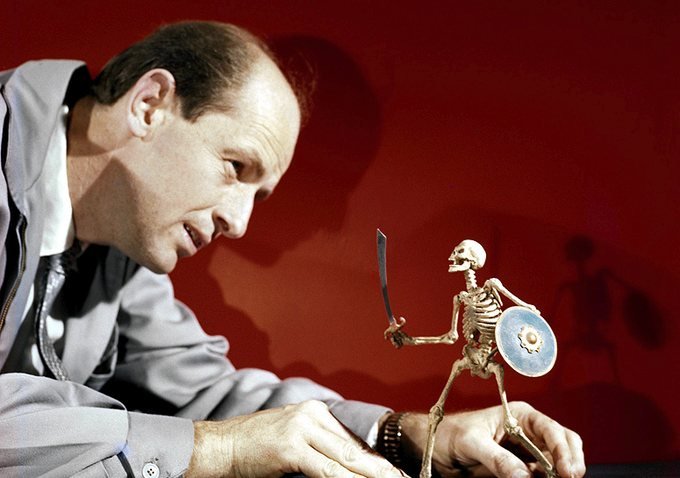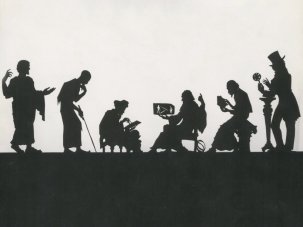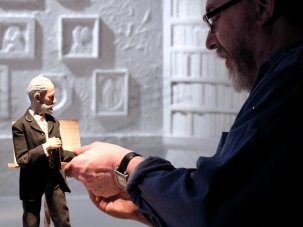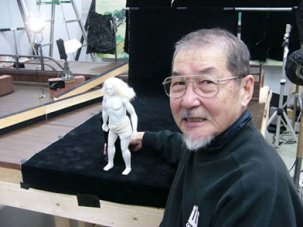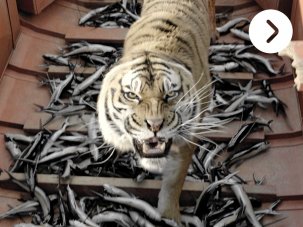The outpouring of palpably genuine grief that followed the announcement of Ray Harryhausen’s death on 7 May 2013, a few weeks short of his 93rd birthday, was fed by many tributaries. As with similar reactions to the deaths of BBC children’s TV stalwarts Oliver Postgate and Tony Hart either side of the turn of 2009, there was a shared sense of loss of an essential part of our childhoods (and in this case “our” could apply to almost anyone born since the 1940s), something felt particularly keenly as the twentieth century recedes further into the past.
But with Harryhausen, the loss was felt even more keenly: he seemed to be a one-man embodiment of entire genres, technologies and traditions, many of them verging on understandable but undeserved obsolescence. Although he worked with (and sometimes invented) what was then cutting-edge technology, the eloquent physical expressiveness of his creatures (he never called them “monsters”) recalls silent cinema, while their painstakingly hand-made, proudly artisanal nature links him directly to the great craftsmen of prior centuries.
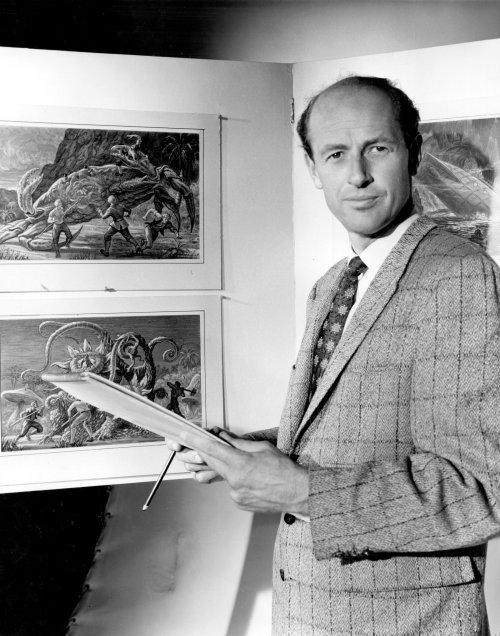
Harryhausen with sketches for Mysterious Island (1961)
Those of us old enough to experience a Harryhausen film on its original release, topped up with regular appearances by Jason and the Argonauts (1963) and the Sinbad films in children’s Saturday-morning cinema programmes, quickly latched onto the fact that his name on the opening credits denoted something very special. In fact, between the late 1940s and the game-changing dawn of Industrial Light and Magic three decades later, Harryhausen was practically sui generis. Of course, there were other mid-century American special-effects masters (matte-painting wizard Albert Whitlock, shark, squid and crocodile creator Bob Mattey, Douglas Trumbull and the rest of the 2001: A Space Odyssey team, physical-effects specialists Rick Baker, Rob Bottin and Tom Savini, Harryhausen’s own mentor Willis O’Brien), but none achieved the same degree of popular recognition, and no one has managed it since.
When an Italian restaurant was named after Lucio Fulci in Shaun of the Dead (2004), it was an in-joke aimed at the cognoscenti, but the origin of the restaurant ‘Harryhausen’s’ in Pixar’s Monsters, Inc. (2001) was far more widely recognised. For Harryhausen wasn’t just an auteur (a remarkably uncontentious notion given that his onscreen credit usually read ‘Technical Effects’ or ‘Special Visual Effects’, plus the occasional ‘Associate Producer’) – he was a brand, demonstrated by the fact that most current DVDs and Blu-rays of his work bear his highlighted signature, often the only text on the front of the box besides the film’s title, with the hired-hand director and second-string human performers relegated to the small print on the back.
Even globally, there aren’t many obvious counterparts. Although the Czech Karel Zeman (1910-89) and the Russian Aleksandr Ptushko (1900-73) were similarly associated with elaborate fantasies (sometimes inspired by Harryhausen’s own influences: Jules Verne, Jonathan Swift, Gustave Doré), and both had a distinguished track record in stop-motion animation, neither would become as indelibly associated with the process as was Harryhausen, who coined the name ‘Dynamation’ to describe his specific techniques. Indeed, one would be more likely to guess that the dinosaurs in Zeman’s Journey to the Beginning of Time (1955) were early Harryhausen creations if shown them unforewarned.
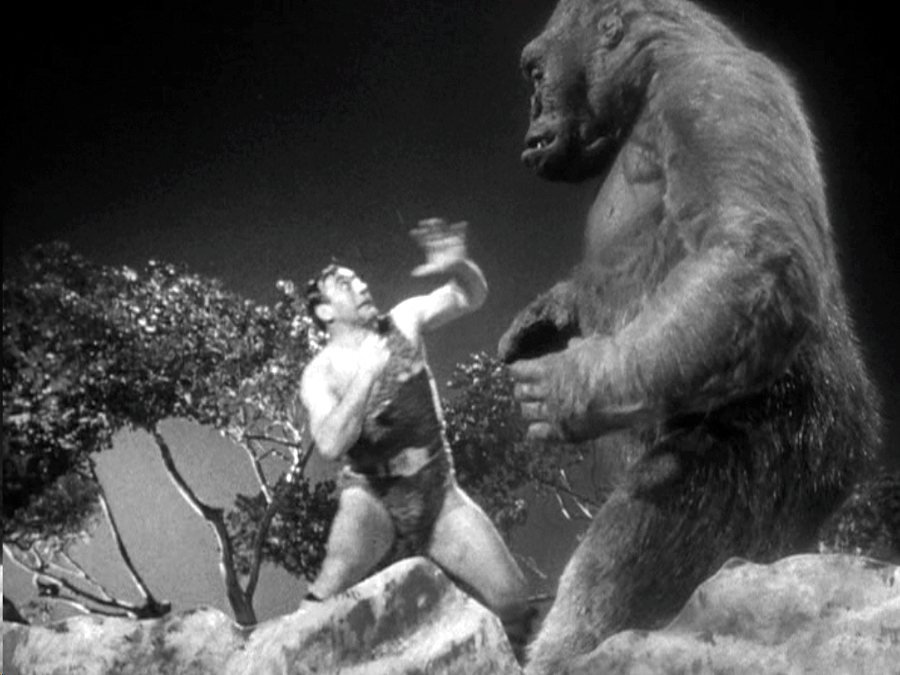
Mighty Joe Young (1959), Harryhausen’s first hire as deputy to his mentor Willis O’Brien
Harryhausen wasn’t the first to bring three-dimensional dinosaurs to life, of course – his future mentor Willis O’Brien made The Dinosaur and the Missing Link: A Prehistoric Tragedy in 1915, five years before Harryhausen was even born (on 29 June 1920, in Los Angeles). When young Ray was still a child, O’Brien was making huge technical and conceptual advances with The Lost World (1925) and King Kong (1933), both of which featured stop-motion dinosaurs with jerky but uncannily plausible movements, the product of careful scientific and observational research, a boundless imagination and a great deal of patience. But Harryhausen would spend much of his career building on and refining O’Brien’s innovations, beginning with the impossibly ambitious The Evolution of the World (1938-40), made largely single-handedly in his father’s garage.
This was begun when he was still in his teens, while taking evening classes in art and anatomy (he had already contacted his idol, and ‘Obie’ had advised him to learn more about biology and musculature), and while it was ultimately abandoned thanks to both the then-unrealisable scale of its ambition and the release of Disney’s Fantasia (1940) with its conceptually very similar ‘Rite of Spring’ section, Harryhausen preserved and later released the footage. Although there’s a certain stiffness to the movements of his tyrannosaur and triceratops as they square up prior to a fight, it’s clear that even at this embryonic stage of his career Harryhausen has grasped the most important of all animation techniques: his dinosaurs may seem a tad arthritic at times, but they nonetheless look convincingly alive – certainly enough to convince O’Brien to hire Harryhausen as his deputy on Mighty Joe Young (1949) after a solo apprenticeship animating nursery rhymes and commercials.
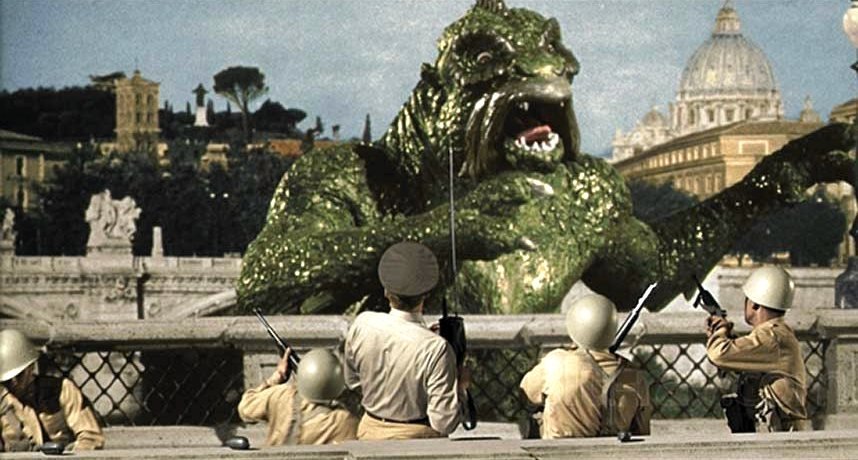
20 Million Miles to Earth (1957)
Harryhausen would revisit his dinosaurs regularly over the next 30 years. His feature debut as sole ‘technical effects’ creator, The Beast from 20,000 Fathoms (1953), saw a ‘rhedosaurus’ (a made-up name whose creator hasn’t denied suggestions that the initial ‘RH’ is not coincidental) thawed out by atomic tests and heading for its old stamping ground, onto which New York City has been inconveniently constructed in the meantime. To maintain the illusion of the gigantic beast wandering through the streets of an actual, human-populated city, Harryhausen devised a three-plane technique whereby the animated creature was effectively “sandwiched” between live-action background and foreground plates (the latter superimposed via mattes), thus allowing people to flee in whatever direction was available. This created what was then an unprecedented degree of realism, so much so that a nervous BBFC gave it one of their newly-introduced X certificates on its original British release, although this has since been substantially downgraded.
Four years later, Harryhausen produced his final entry in what he called the “monster on the rampage” genre, 20 Million Miles to Earth (1957). Here, he sought to depict the life of one of his creations from birth, initially shown as a desperately vulnerable baby tearing its way out of a jelly ‘cocoon’ and reinforcing the film’s subtext about the dangers of tampering with nature (the creature has been imported from its native Venus, but grows to giant size in Earth’s richer atmosphere). The creature was named the Ymir, after Scandinavian mythology, but is essentially another dinosaur, although Harryhausen gave it a distinctly humanoid bearing (its muscular arms are far longer than a tyrannosaur’s) to encourage audience empathy. When the Ymir battles an elephant at a Roman zoo, it’s impossible to take sides: they’re both victims of human greed and exploitation.
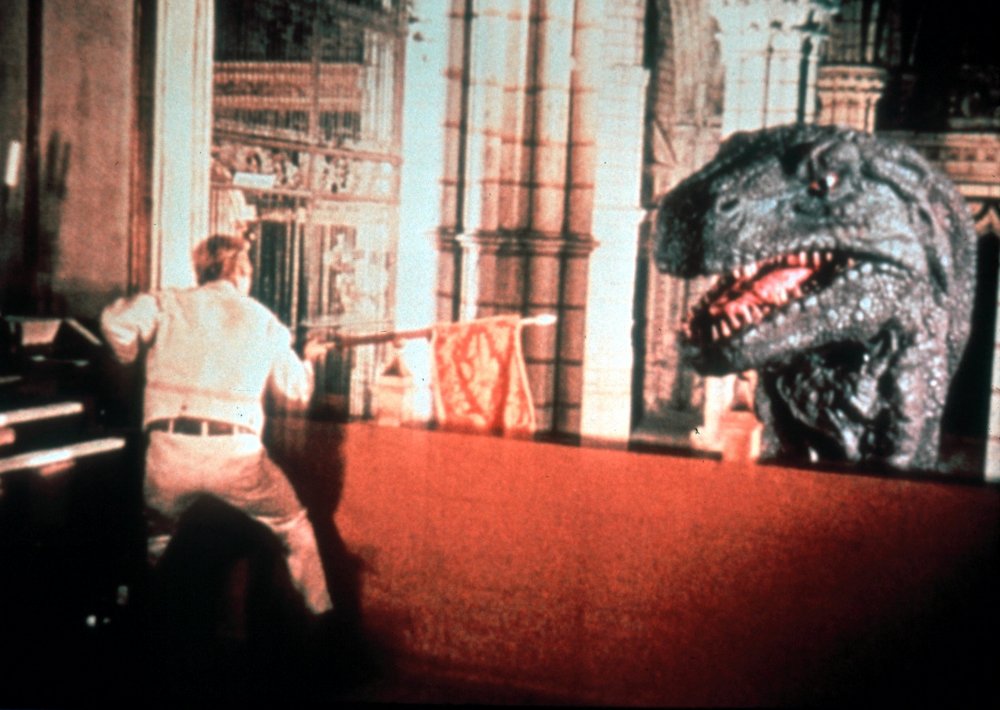
The Valley of Gwangi (1969)
The Hammer-produced One Million Years B.C. (1966) saw Harryhausen’s stop-motion dinosaurs competing with a real iguana (partly to save money, but it also doubled as a tribute to the lower-rent effects in Hal Roach’s One Million B.C. a quarter of a century earlier) and Raquel Welch’s show-stopping animal-skin bikini, the latter helping identify her from a distance as she’s seized by a pteranodon and fought over by others over its nest.
Harryhausen also recreated the tyrannosaur-versus-triceratops tussle initially attempted in Evolution, this time with far more fluidity: you can see the muscles rippling under their skin. He turned down the chance to work on the sequels in favour of The Valley of Gwangi (1969), whose commercial failure obscured the fact that it represented the peak of Harryhausen’s achievement in breathing life into long-extinct creatures. In fact, it’s arguable that no one has really topped it since. For all the undeniable yet superficial technical superiority of the CGI-assisted dinosaurs in Jurassic Park (1992), they’re still Harryhausen creatures at base: as far as the popular imagination is concerned to this day, he was the man who brought dinosaurs to life, and to an astonishingly far-reaching degree.
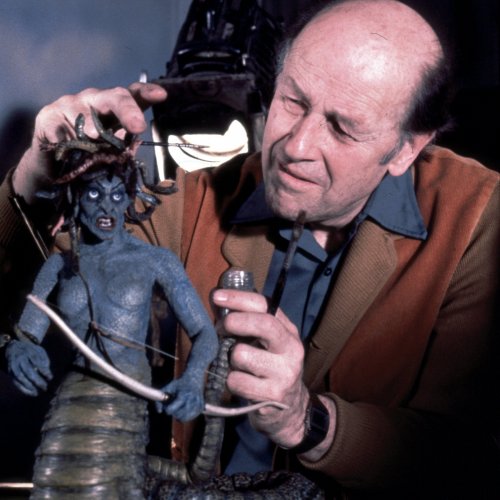
Harryhausen modelling Medusa for Clash of the Titans (1981)
He was equally convincing when rendering wholly mythical creatures: the Cyclops, the Roc, the snake-haired (and bodied) Medusa, six-armed Indian goddess Kali, griffins, centaurs, dragons, the flying horse Pegasus and many others. The watershed here was 1957-8: prior to then, Harryhausen’s features had been in black and white (through budget rather than choice: decades later, Harryhausen was happy to authorise their colourisation), set in the present day, with the creatures transplanted from their natural environments and plonked down into familiar urban spaces, which they then understandably start to trash. (This is as true of the Golden Gate Bridge-wrestling octopus in 1955’s It Came From Beneath the Sea as it is of its more reptilian cousins).
But from The 7th Voyage of Sinbad (1958) onwards, the films were conceived in colour from the outset, and the vast majority revolve around the notion of exploration (conveyed in the very titles of 1961’s Mysterious Island, 1964’s First Men in the Moon and the word ‘voyage’ in two of the Sinbad films), of encountering these creatures in their natural habitats, metaphorically or literally poking them with sticks and usually ruing the consequences. Nostalgically, Sinbad and the Eye of the Tiger (1977) saw a partial return to the “monster on the rampage” scenarios of the 1950s, with giant wasps, walruses and sabre-toothed cats rubbing shoulders with more conventionally mythical creations.
Although Harryhausen never went quite as far as the Czech stop-motion master Jan Švankmajer in reanimating actual corpses (or at least their constituent parts: bones, flesh, tongues), there’s always been a peculiar potency about his animated skeletons, whether appearing singly in the first Sinbad film or as a seven-strong platoon in Jason and the Argonauts.
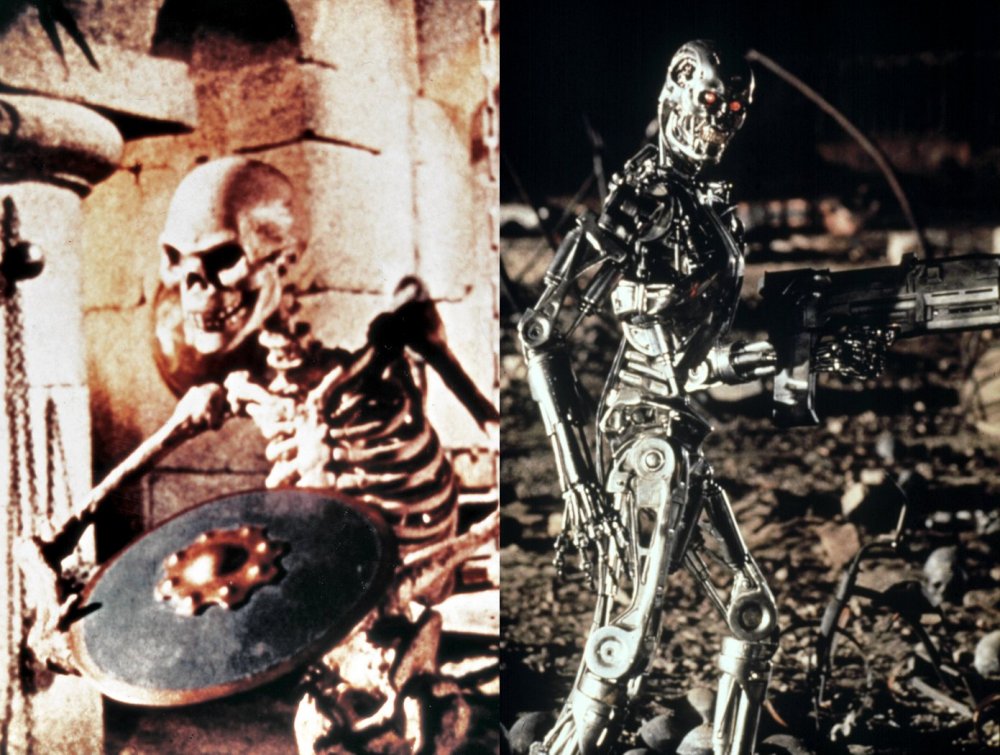
The Seventh Voyage of Sinbad (left, 1958); Terminator 2: Judgement Day (right, 1991)
This fascination clearly stems partly from the way Harryhausen’s skeletons can’t help but emphasise our own mortality, but they also underscore the physicality of his work in its rawest form. For although his creatures may have lacked circulatory and respiratory systems (however much Harryhausen’s attention to detail leads us to believe otherwise), they all possessed actual skeletons, metal armatures that were initially fashioned by Harryhausen’s father Fred until his death in 1962. They look not unlike the skeletal Terminator at the end of James Cameron’s eponymous 1984 film, which seems to have been a conscious tribute. One of the most distinctive qualities of stop-motion animation is our constant awareness that we’re looking at actual physical objects with tactility and heft – the latter quality might be boosted by carefully-applied sound effects, but they feel more convincing than any number of 3D CGI apparitions. (Although he carried out 3-D tests with some trepidation during the stereoscopic boom of the early 1950s, none of Harryhausen’s completed films used the system.)
In his unprecedentedly vivid creation of imaginary universes drawn from ancient myths and legends, Harryhausen could be regarded as a twentieth-century successor to Richard Wagner, with the Sinbad/Jason/Titans films forming his own latterday Nibelunglied. But that suggests a degree of creative megalomania that seems wholly at odds with the personality of what by seemingly universal consent was one of the nicest and most respected men in a notoriously backstabbing business. He was lucky to find a regular producer, Charles H. Schneer, very early in his career – they first collaborated on It Came From Beneath the Sea and on virtually everything since, with both men relocating permanently to London in 1960.
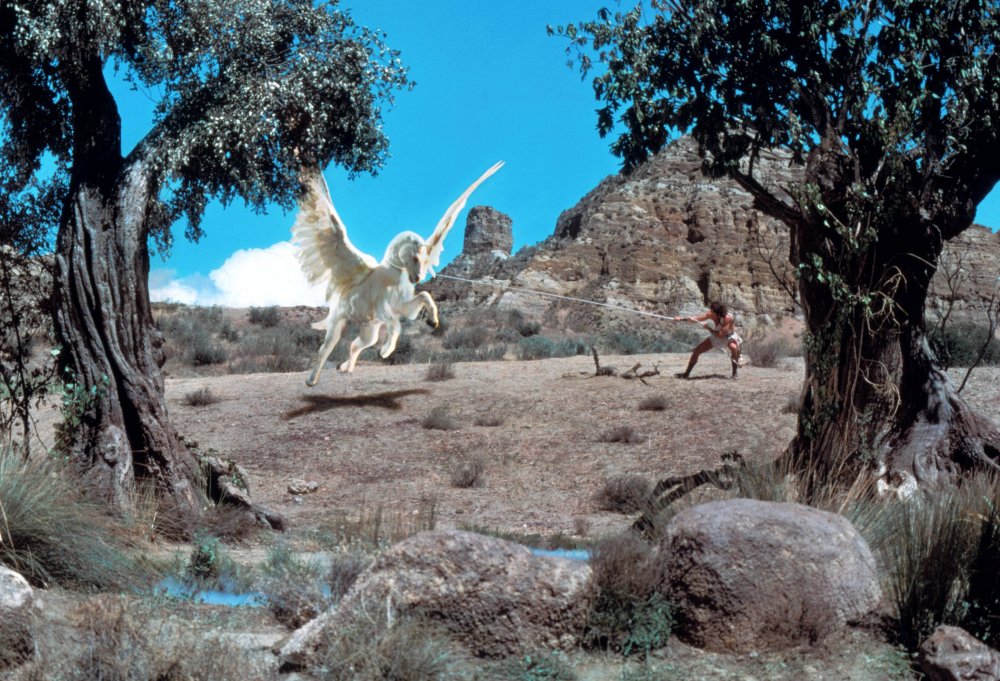
Clash of the Titans (1981)
Clash of the Titans (1981) wasn’t planned as Harryhausen’s last film: indeed, with its unusually large budget ($16 million, exceeding all his previous films combined) and unprecedentedly star-studded cast (Laurence Olivier, Maggie Smith, Claire Bloom etc) it might have heralded a new chapter in his output. Follow-up projects reached the early development stage (a sequel, Force of the Trojans, and two more Sinbad films were all mooted), but Harryhausen recognised that the tide was turning in favour of new technologies, and that it would be impossible to match the level of realism seen in the new generation of blockbusters while continuing to create his special effects largely single-handed. He was also conscious of a post-Star Wars shift in favour of stories set in the future, whereas he generally favoured an imaginary or actual past. So he retired at 61, and lived three more decades, long enough to see that his influence not merely remained but deepened over time.
For the worlds that he created have comprehensively shifted from a 1950s fringe attraction to an indelible part of the mainstream Hollywood landscape, and those who helped shape it often started out as wide-eyed Harryhausen fans. Tim Burton, James Cameron, Joe Dante, Terry Gilliam, Peter Jackson, Nick Park, Steven Spielberg, Guillermo del Toro and many others queue up to pay homage in the charming 2012 career-retrospective documentary Ray Harryhausen: Special Effects Titan, which also preserves Harryhausen’s last major interview. Perhaps Roger Corman, another graduate of low-budget 1950s monster movies, might ultimately surpass Harryhausen for overall breadth of influence on mainstream American cinema, but it’s hard to think of many other serious contenders.
-
The 100 Greatest Films of All Time 2012

In our biggest ever film critics’ poll, the list of best movies ever made has a new top film, ending the 50-year reign of Citizen Kane.
Wednesday 1 August 2012
-
The Digital Edition and Archive quick link
Log in here to your digital edition and archive subscription, take a look at the packages on offer and buy a subscription.




